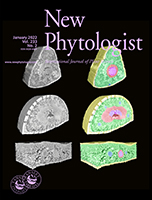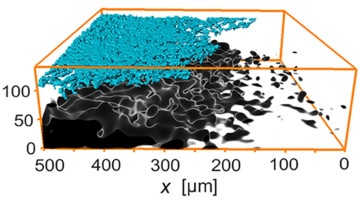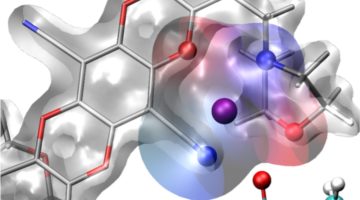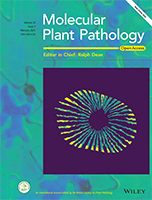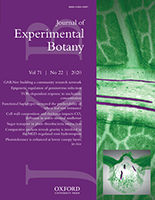3D anatomical views of conifer leaves with diverse morphologies, generated using synchrotron microCT imaging (colors show different segmented tissues). Top–bottom: Pinus monticola, P. pungens, and Wollemia nobilis. Image courtesy of Santiago Trueba. Read more »
New Technique Visualizes Every Pigment Cell of Zebrafish in 3D
Researchers developed a new technique that uses x-ray microtomography and silver staining to image every pigment cell of a whole zebrafish in 3D. The method could be used to learn more about the 3D architecture of melanoma tumors and potentially guide treatment decisions. Read more »
Strategies for Reducing Platinum Waste in Fuel Cells
Industry and university researchers used the ALS to explore why the platinum used as a catalyst in hydrogen fuel cells degrades unevenly. The resulting knowledge has enabled the development of simple, effective strategies to reduce the waste of precious catalyst material, lowering the costs associated with a promising green technology. Read more »![]()
![]()
3D View Reveals Shadow Effect after Rapid Battery Charging
Using 3D x-ray microtomography, researchers measured the lithiation levels of particles in Li-ion battery electrodes during charging. At faster charging rates, lithium metal accumulated on the electrode surface and created a “shadow effect,” a region of poor lithiation in the electrode at some distance away from the lithium plating. Read more »
In a Hawaiian Lava Fountain, Fluid Magma Turns Brittle
Compared to the violent explosions of Mount Vesuvius or Mount St. Helens, Hawaiian volcanic eruptions are relatively calm, characterized by flowing rivers and fountains of lava. Here, researchers have discovered that even low-viscosity magma sometimes behaves more like brittle glass that shatters into fine particles. Read more »
Designing Selective Membranes for Batteries Using a Drug Discovery Toolbox
Researchers designed a polymer membrane with molecular cages built into its pores that hold positively charged ions from a lithium salt. These “solvation cages” increased lithium-ion flow by an order of magnitude and could allow high-voltage battery cells to operate at higher power and more efficiently, important for both electric vehicles and aircraft. Read more »
A Detailed Look Inside Tsetse Flies
To better understand the unique reproductive biology of tsetse flies, which are carriers of the parasites that cause a deadly infection known as African sleeping sickness, researchers explored the intact organs and tissues of tsetse flies using a powerful 3D x-ray imaging technique at Berkeley Lab’s Advanced Light Source. Read more »
Xylella fastidiosa causes transcriptional shifts that precede tylose formation and starch depletion in xylem
During Pierce’s disease, Xylella fastidiosa triggers transcriptional changes in grapevines and induces major physiological responses, including tylose formation and starch depletion. X-ray computed microtomography and a machine-learning algorithm were used to track the depletion of starch reserves in the xylem of a grapevine stem infected with Pierce’s disease. Read more »
Coordinated decline of leaf hydraulic and stomatal conductances under drought is not linked to leaf xylem embolism for different grapevine cultivars
Drought decreases water transport capacity of leaves and limits gas exchange, which involves reduced leaf hydraulic conductance (Kleaf) in both the xylem and outside-xylem pathways. We combined Kleaf and gas exchange measurements, micro-computed tomography of intact leaves, and spatially explicit modeling of the outside-xylem pathways to evaluate the role of vein embolism and Kleaf in the responses of two different grapevine cultivars to drought. Read more »
Microstructures Explain Beetle Exoskeleton Strength
Using microtomography and other techniques, researchers identified the exoskeletal toughening mechanisms that explain the crush resistance of the aptly named diabolical ironclad beetle. The observations could be applied in developing tough, impact- and crush-resistant materials for joining dissimilar materials. Read more »![]()
![]()
- « Previous Page
- 1
- 2
- 3
- 4
- …
- 6
- Next Page »
